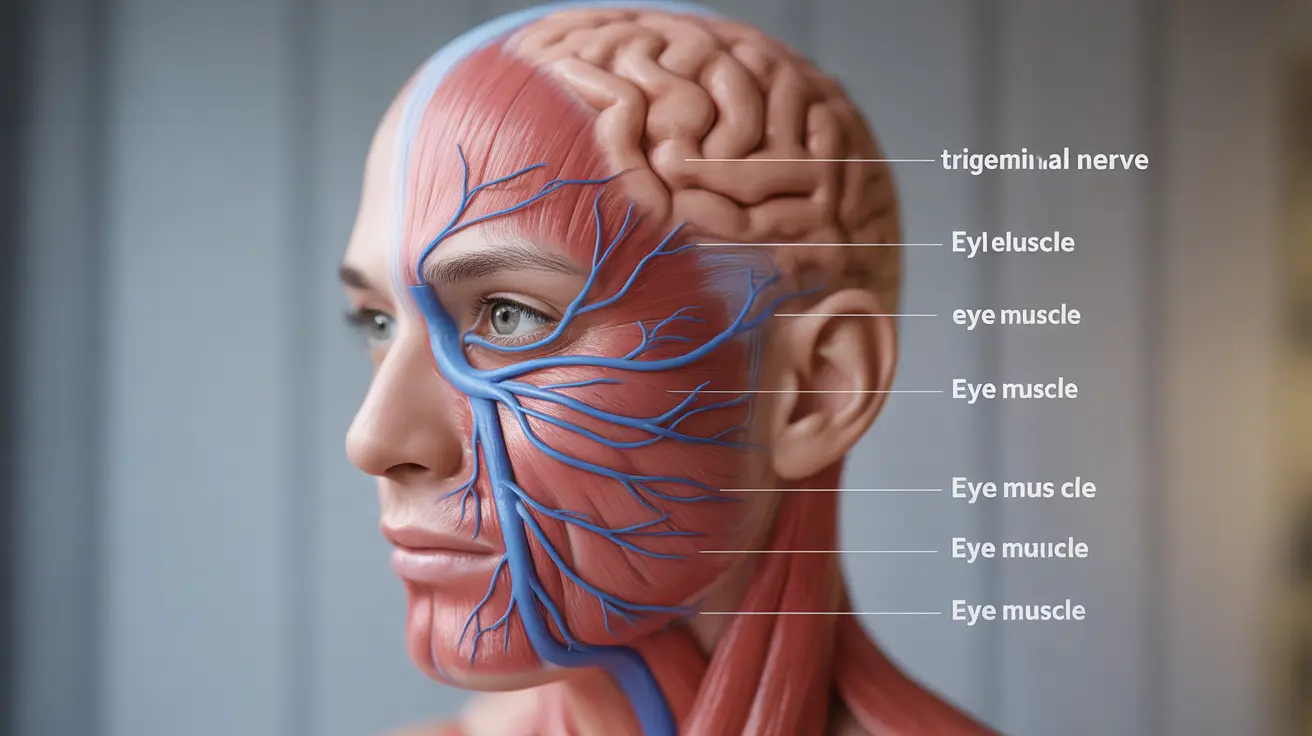Eye twitching during migraines can be both distressing and confusing for those who experience these symptoms. This involuntary muscle movement, known medically as blepharospasm when it affects the eyelid, often occurs alongside migraine headaches, leading many to wonder about the connection between these two conditions.
Understanding the relationship between eye twitching and migraines is crucial for proper management and treatment. Let's explore the causes, connections, and effective solutions for dealing with these concurrent symptoms.
The Connection Between Migraines and Eye Twitching
Migraines and eye twitching share several common triggers and underlying mechanisms. The nervous system plays a crucial role in both conditions, with neurotransmitter imbalances potentially contributing to both symptoms. When these neurological pathways are disrupted, it can manifest as both head pain and involuntary muscle movements.
Common Triggers and Risk Factors
Several factors can trigger both migraines and eye twitching simultaneously:
- Stress and anxiety
- Sleep deprivation
- Excessive caffeine consumption
- Dehydration
- Eye strain from digital screens
- Nutritional deficiencies
- Hormonal changes
Understanding Eye Twitching During Migraine Attacks
Eye twitching during a migraine attack often occurs as part of the broader spectrum of neurological symptoms. These muscle spasms can appear before, during, or after the headache phase, and may be more pronounced on the same side as the migraine pain.
The Role of the Nervous System
The trigeminal nerve, which is heavily involved in migraine pathophysiology, also innervates the muscles around the eye. When this nerve becomes irritated or overstimulated during a migraine attack, it can lead to involuntary muscle contractions in the eyelid area.
Distinguishing Between Different Types of Headaches
Not all headaches that occur with eye twitching are migraines. Understanding the differences between various types of headaches is essential for proper treatment and management.
Cluster Headaches vs. Migraines
Cluster headaches and migraines can both cause eye-related symptoms, but they have distinct characteristics. Cluster headaches typically cause severe pain around one eye, while migraines often produce more widespread symptoms and can affect either side of the head.
Treatment Approaches and Management Strategies
Managing eye twitching and migraines often requires a multi-faceted approach:
- Regular sleep schedule maintenance
- Stress reduction techniques
- Proper hydration
- Balanced nutrition
- Limited screen time
- Regular exercise
- Trigger avoidance
Medication Considerations
Some migraine medications may influence eye twitching as a side effect. It's important to discuss any new or worsening symptoms with a healthcare provider to ensure the most appropriate treatment plan.
Frequently Asked Questions
What are the common causes of eye twitching during a migraine attack?
Eye twitching during migraines is commonly caused by nervous system activation, stress, fatigue, and the same triggers that initiate the migraine itself. The trigeminal nerve's involvement in both conditions can lead to simultaneous symptoms.
How can stress, caffeine, and fatigue trigger both migraines and eye twitching?
These factors can affect neurotransmitter levels and nervous system function, potentially triggering both conditions. Stress releases cortisol, caffeine influences brain chemistry, and fatigue can lead to muscle tension and neurological sensitivity.
Can cluster headaches be mistaken for migraines, and what are their distinct symptoms?
Yes, cluster headaches can be mistaken for migraines, but they typically feature intense pain focused around one eye, shorter duration (15-180 minutes), and occur in clusters or patterns. Migraines usually last longer and have additional symptoms like nausea and light sensitivity.
Are there any specific migraine medications that can cause eye twitching as a side effect?
Some migraine medications, particularly those affecting neurotransmitters or muscle function, may cause eye twitching as a side effect. This includes certain triptan medications and calcium channel blockers used for migraine prevention.
What are some lifestyle changes that can help manage both migraines and eye twitching symptoms?
Effective lifestyle changes include maintaining a regular sleep schedule, managing stress through relaxation techniques, staying hydrated, limiting caffeine intake, practicing good eye care habits, and identifying and avoiding personal triggers.




